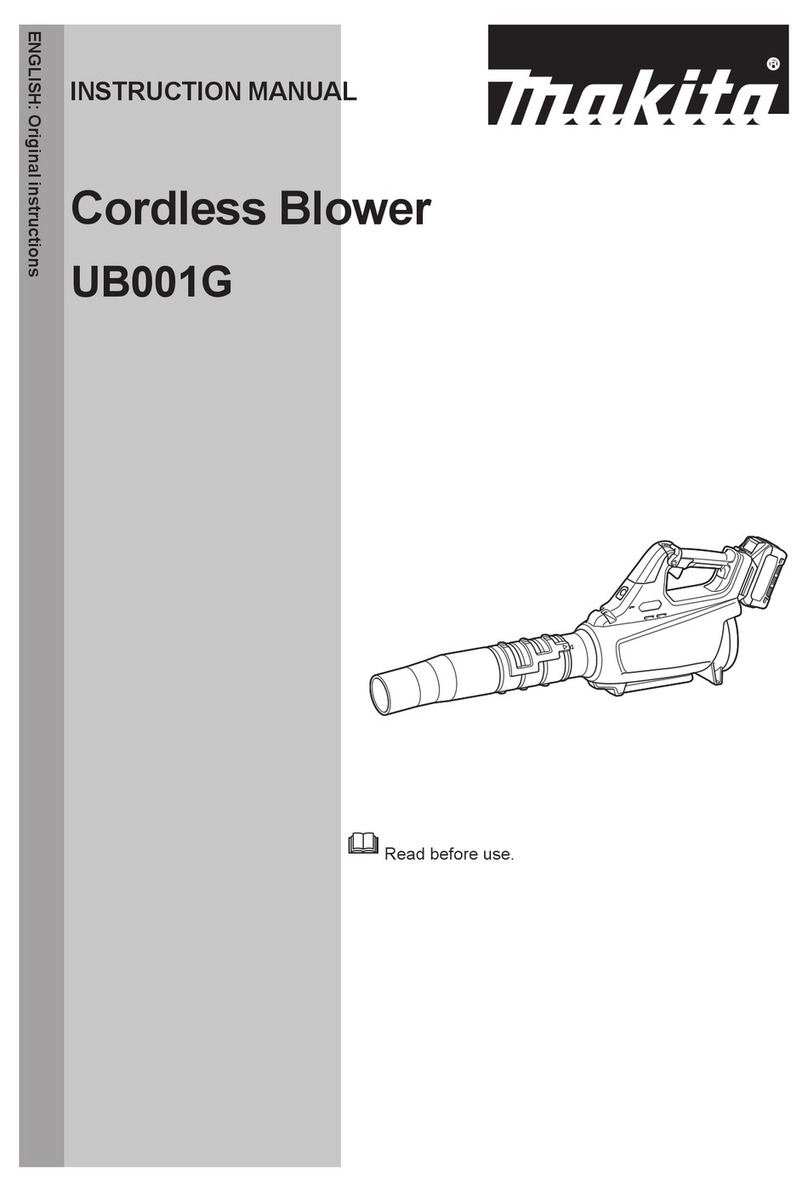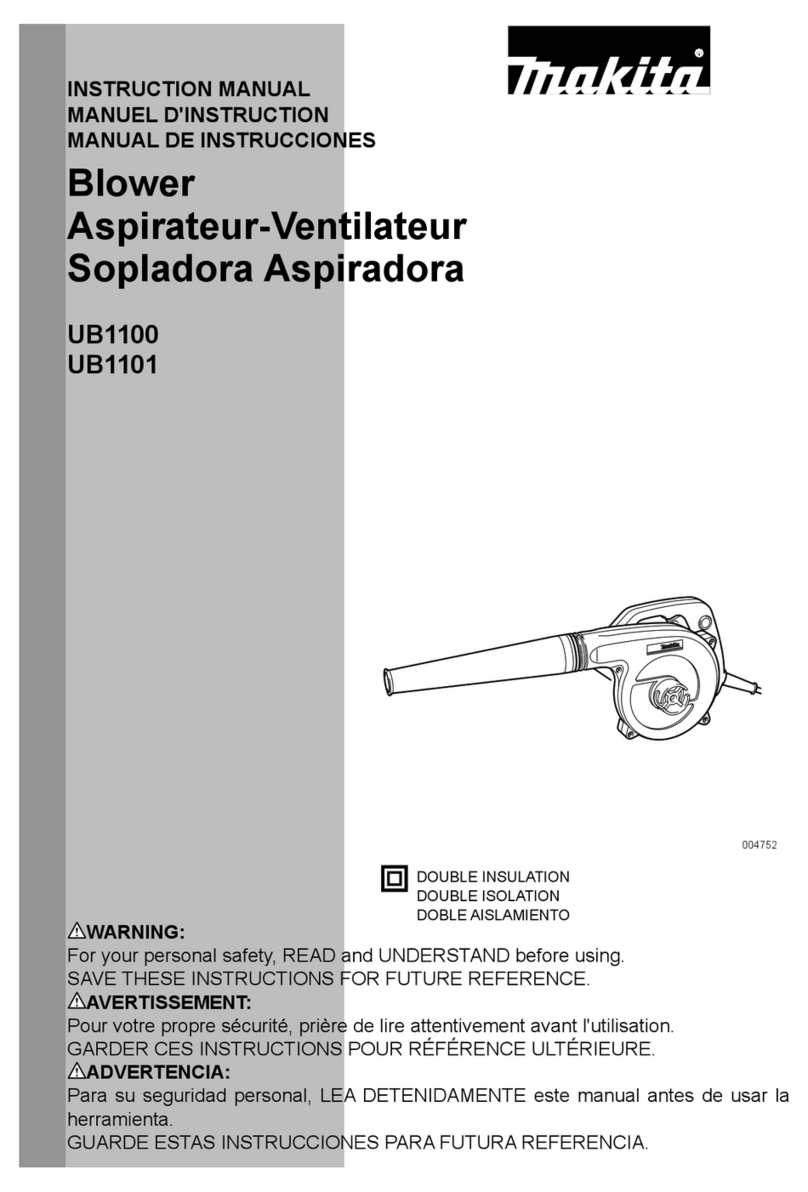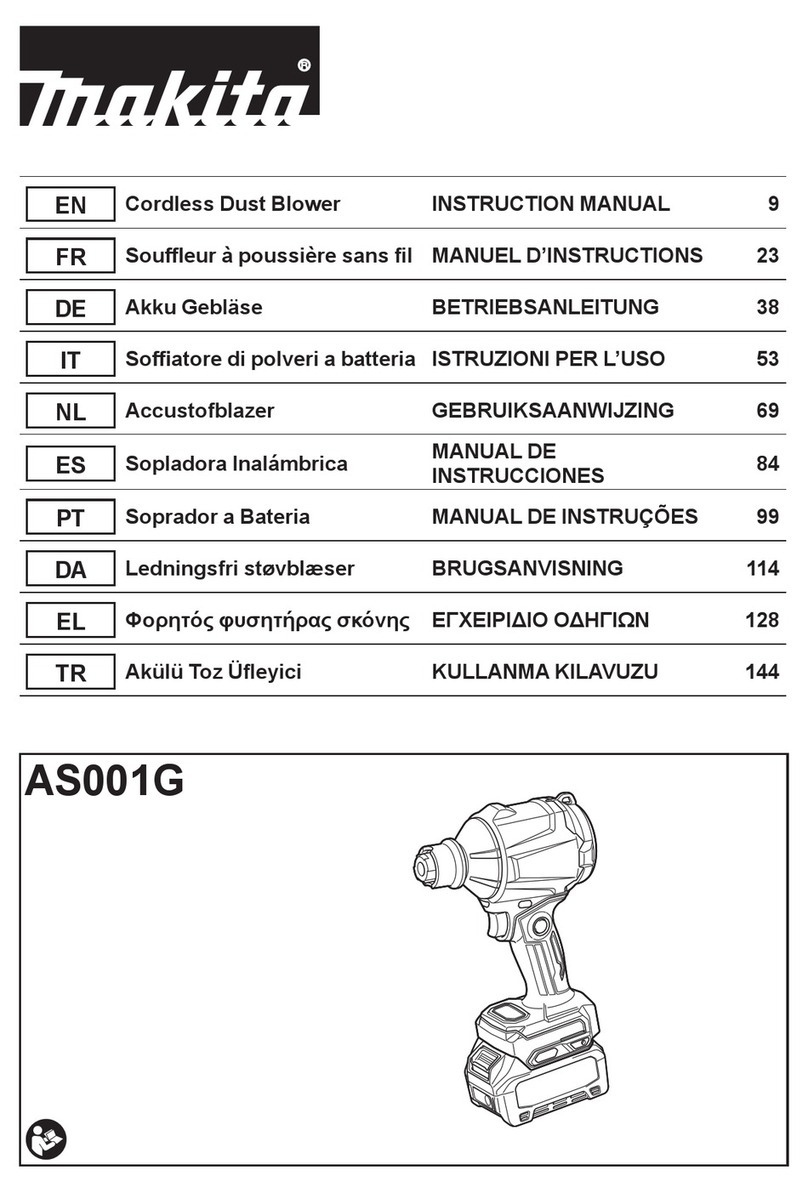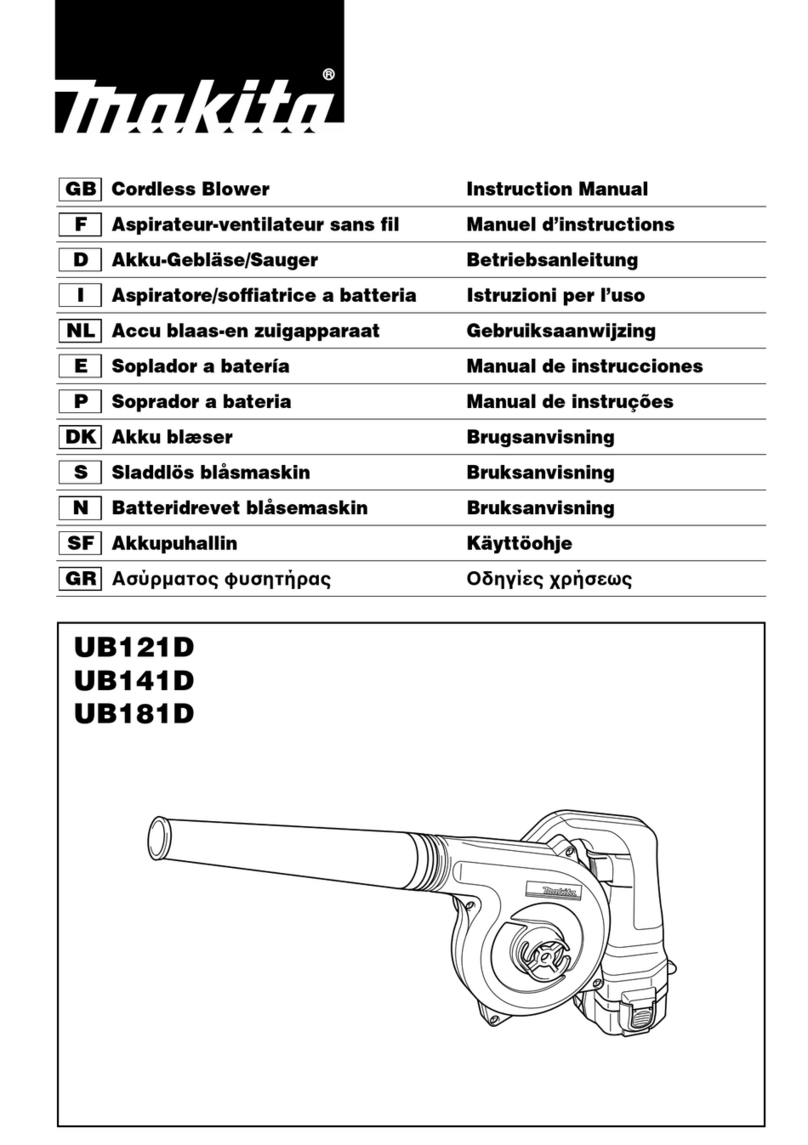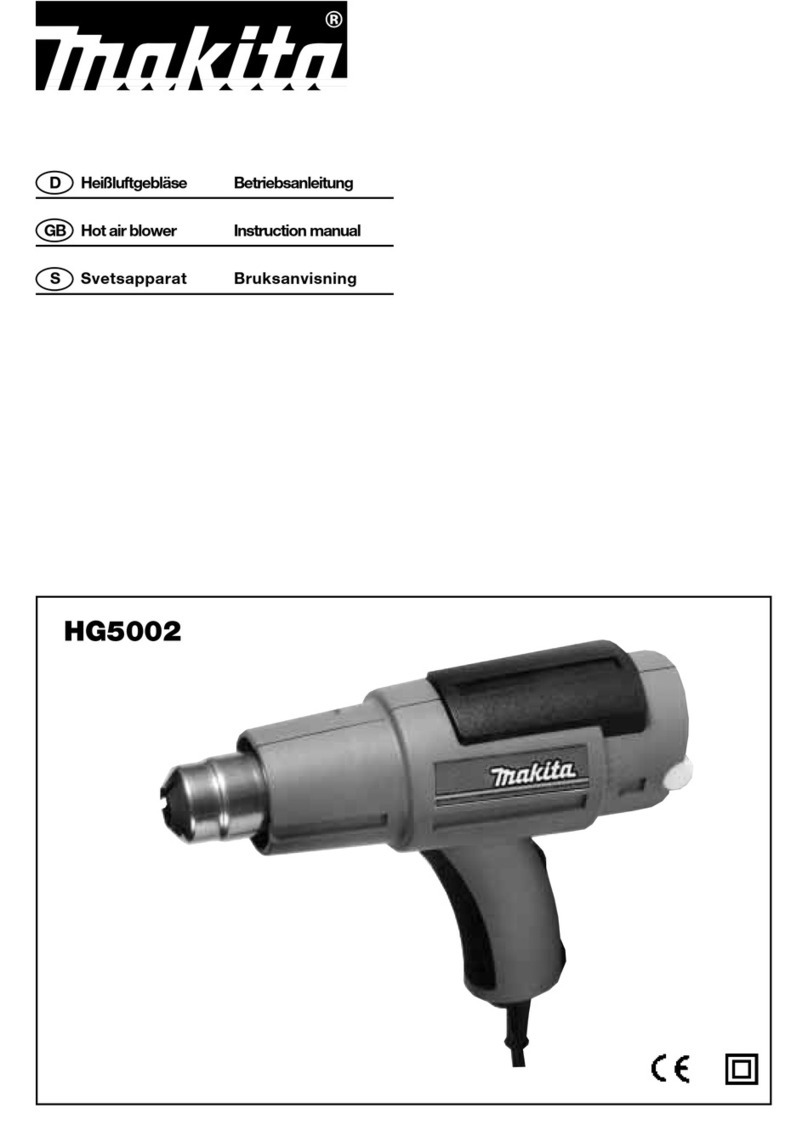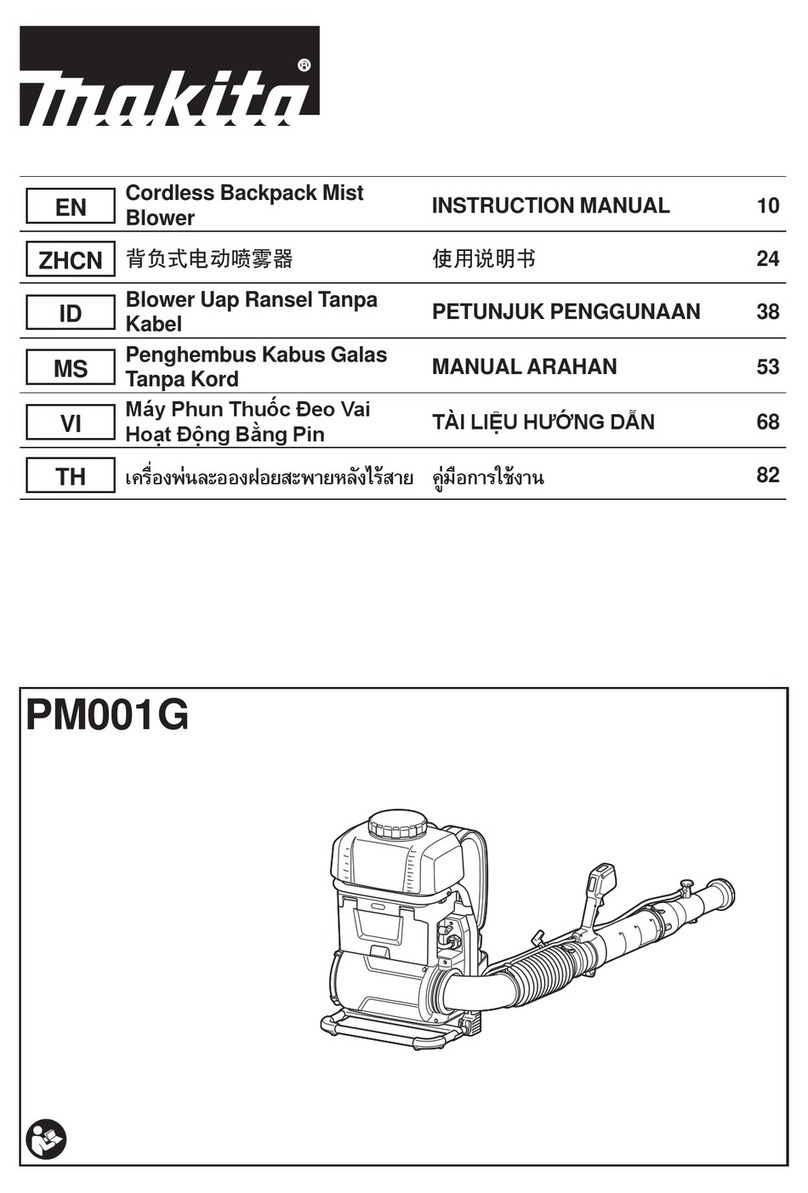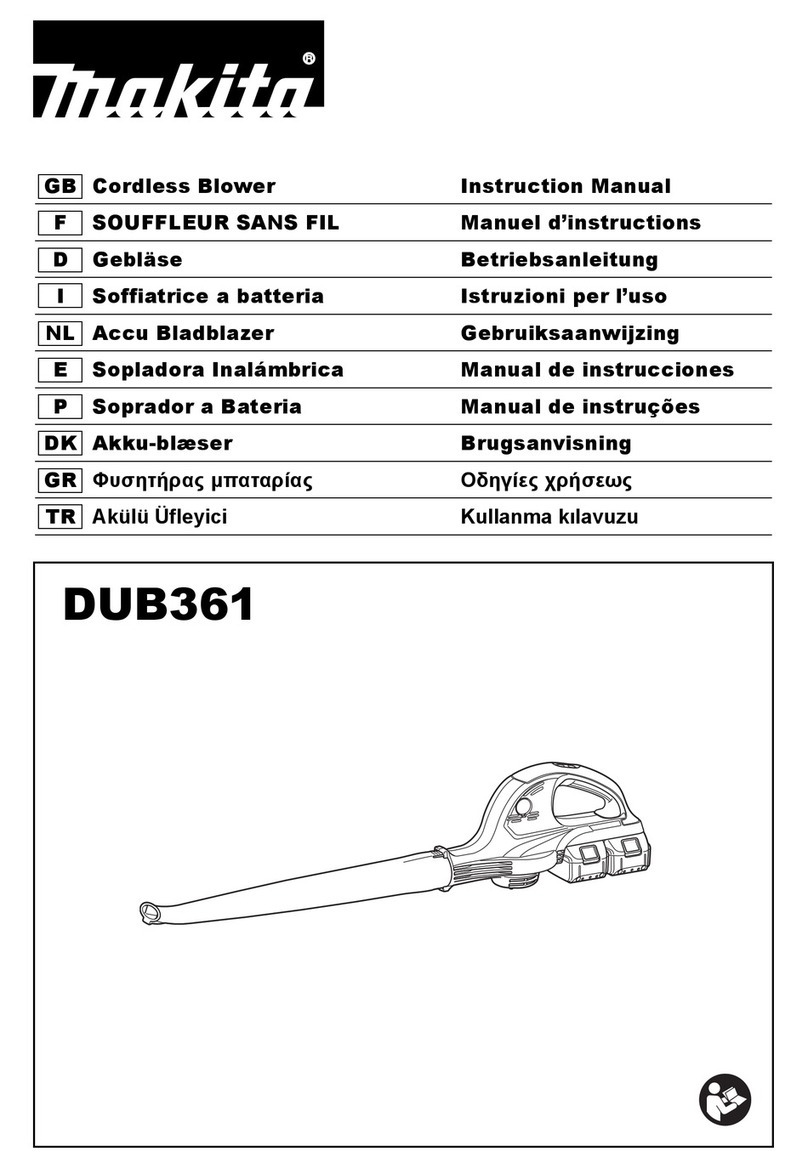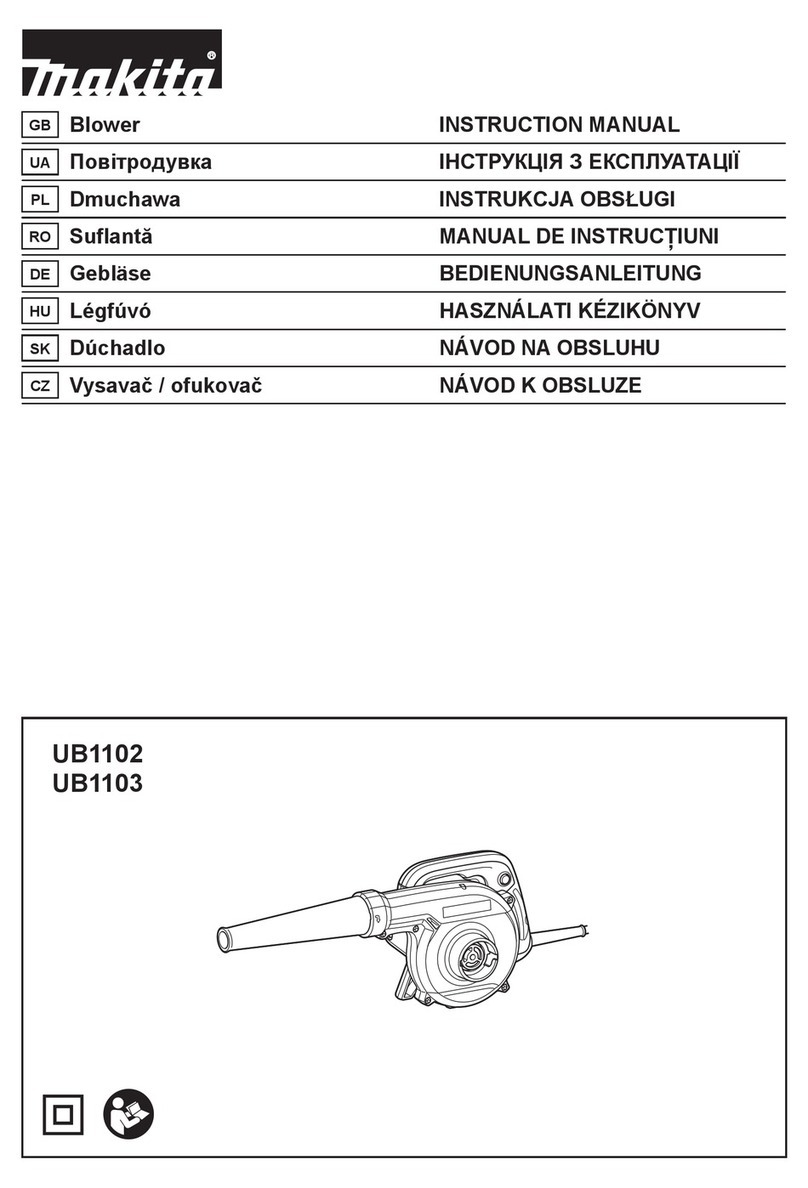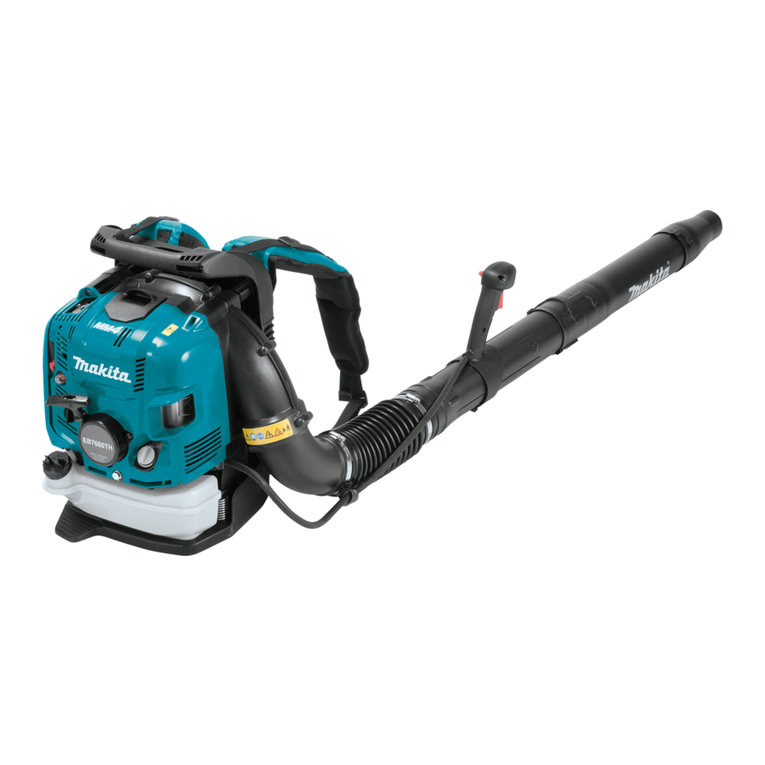
7
Waste electrical products should
not be disposed of with household
waste. Please recycle where
facilities exist. Check with your local
authority or retailer for recycling
advice.
•
Double insulation•
GENERAL SAFETY RULES
1. Important safety instruction
This appliance can be used by
children aged from 8 years and
above and persons with reduced
physical, sensory or mental ca-
pabilities or lack of experience
and knowledge if they have been
given supervision or instruction
concerning use of the appliance
in a safe way and understand
the hazards involved. Children
shall not play with the appliance.
Cleaning and user maintenance
shall not be made by children
without supervision.
Please read all of the safety and operating instructions
carefully before using this product. Please pay particu-
lar attention to all sections of this operator manual that
carry warning symbols and notices. Failure to follow the
warnings and instructions may result in electric shock,
This tool is intended for blowing and mulching. Never
-
ing balloons.
The tool should be connected only to a power supply of
the same voltage as indicated on the nameplate, and
can only be operated on single-phase AC supply. They
are double-insulated and can, therefore, also be used
from sockets without earth wire.
Save all warning and instructions for future reference.
2. Training
Read the instructions carefully. Be familiar with the
controls and the proper use of the tool.
Never allow children to use the tool.
Never allow people unfamiliar with these instructions to
use the tool. Local Regulations may restrict the age of
the operator.
Never operate the tool while people, especially children,
or pets are nearby.
The operator or user is responsible for accidents or
hazards occurring to other people or their property.
•
•
•
•
•
•
•
•
•
•
3. Preparation
While operating the tool, always wear substantial
footwear and long trousers.
-
lery. They can be caught in moving parts. Use of sturdy
gloves and substantial footwear is recommended when
working outdoors.
Wear protective hair covering to contain long hair. Wear
protective goggles while operating.
To prevent dust irritation the wearing of a face mask is
recommended.
Before using, check the supply and extension cord for
signs of damage and aging. Do not use the tool if the
cord is damaged or worn.
Never operate the tool with defective guards or shields,
or without safety devices, for example collection bag in
place.
Only use a weather proof extension cable correctly
rated to your machine.
4. Operation
Always direct the cable to the rear away from the tool.
If the cord becomes damaged during use, disconnect
the cord from the supply immediately. DO NOT TOUCH
THE CORD BEFORE DISCONNECTING FROM THE
SUPPLY. Do not use the tool if the cord is damaged
or worn.
Do not carry the tool by the cable.
Avoid Dangerous Environment - Don’t use the tool in
damp or wet locations.
Disconnect the tool from the mains supply whenever
you leave the tool, before clearing a blockage, before
checking, cleaning or working on the tool. If the tool
starts to vibrate abnormally switch it off immediately,
disconnect the tool from the mains and inspect for ob-
structions or damage to the unit.
light.
Do not overreach and keep your balance at all times.
Always be sure of your footing on slopes.
Walk, never run.
Keep all cooling air inlets clear of debris.
Never blow debris in the direction of bystanders.
The tool should be supplied via a residual device with a
tripping current of not more than 30 mA.
5. Maintenance and storage
Keep all nuts, bolts and screw tight to be sure the tool is
in safe working condition.
Check the tool frequently for wear or deterioration.
Replace worn or damaged parts.
Use only genuine replacement parts and accessories.
Store Idle Tools Indoors - When not in use, tools should
be stored indoors in dry, and high or locked-up place
- out of reach of children.
6. Additional safety rules for blower / mulcher
Always wear adequate protective clothing when
feet, head or hearing. Use safety glasses or a face
shield, high boots or sturdy shoes, long trousers, work
gloves, a hard hat and ear defenders.
Do not start the tool when it is upside down or when it is
not in the operating position.
•
•
•
•
•
•
•
•
•
•
•
•
•
•
•
•
•
•
•
•
•
•
•
•
•
•
